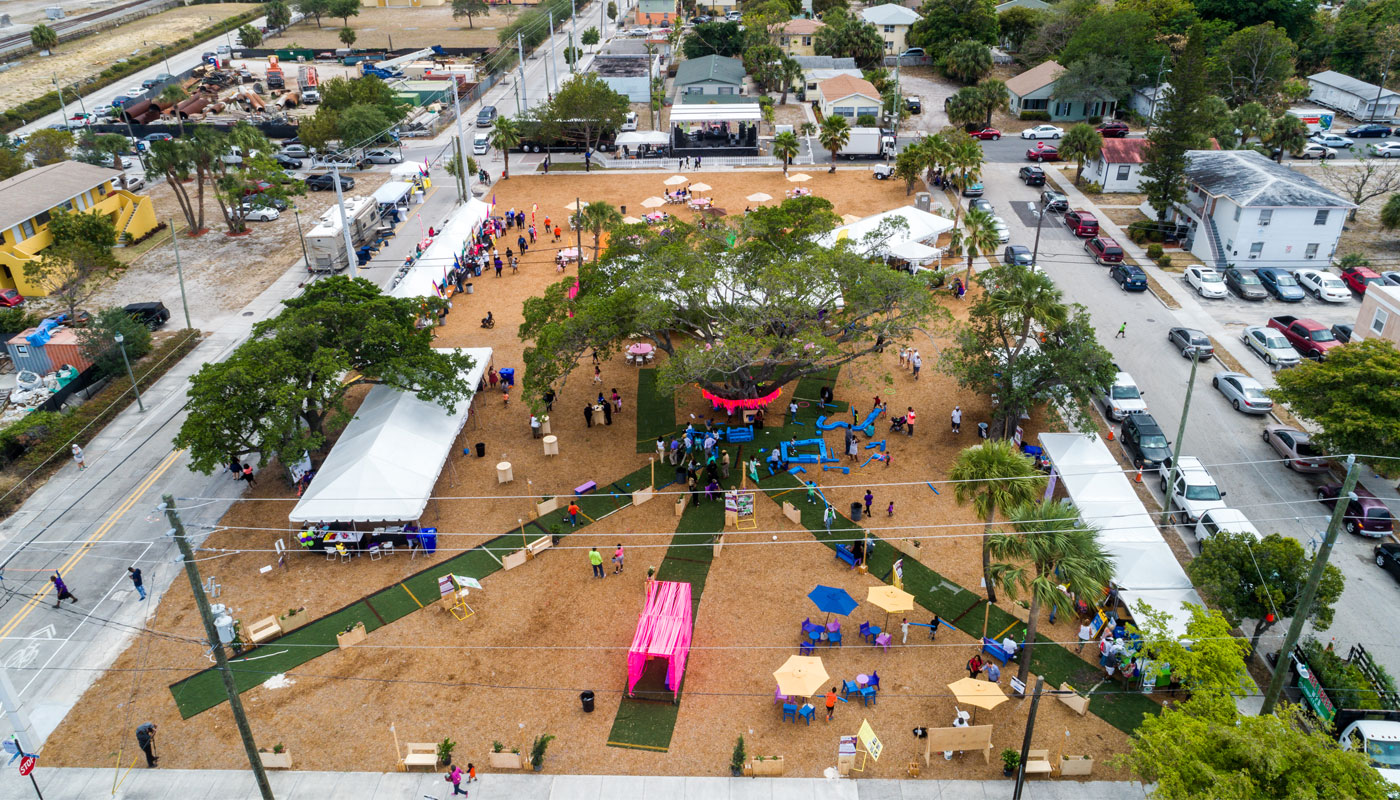
18 May Building Community Trust through Tactical Urbanism – Lessons from West Palm Beach, FL
The famed Sunset Lounge
8 80 Cities has been working with the City of West Palm Beach Community Redevelopment Agency (CRA) and Better Block on an exciting project called Historic Northwest Rising. Thanks to a generous grant from Knight Foundation, we rolled out a community engagement campaign to reimagine the Sunset Lounge and the vacant lot directly across from it. The Sunset is a jazz venue that reached its height of success during the segregation era, hosting household names such as Ella Fitzgerald, Duke Ellington, and James Brown. After desegregation, the Northwest District hollowed out, and the Sunset lost its lustre and no longer served as a cultural anchor for the neighborhood. The CRA recently bought the Sunset Lounge and its surrounding lots and has set aside a significant budget to transform these sites into something that actually serves current neighborhood needs.
“What are these guys doing here?”
From the very beginning, the CRA cautioned us that our job as community engagement facilitators would be challenging.
Firstly, after generations upon generations of racial injustice and broken promises, there is little trust among Northwest community members towards city government. The CRA has been spearheading revitalization efforts in the Northwest, but underlying these efforts is a deep-rooted skepticism among community members about the effectiveness and intent of city’s actions.
Secondly, we are outsiders in more ways than one. All three 8 80 Cities project team members (the two Ryans and myself) are neither from the Northwest nor West Palm Beach. Heck, we’re not even American. The Northwest is a historically black neighbourhood and between the three of us, we are two-second generation Asian-Canadians and a white guy from Winnipeg.
You are probably questioning if we were the right people to work on this project in the first place…as you should! In an ideal world, projects are driven by the community. However, when there isn’t a working process for the community to partner with the City, we believe there’s a role for an experienced outsider to mediate this gap and initiate community action. 8 80 Cities designs fun and meaningful ways for community members to actively participate in city building across North America. We take a step back once the community is in a position to carry forward their ideas, guided by the framework and process we’ve facilitated.
Doing it differently
In 2002, another urban planning firm developed a plan for the Sunset and the lot across from it, without much insight from community members. No action followed. Fifteen years later, it’s no wonder that when we first broached the topic of the Sunset with community members, some felt like it was a complete waste of time. Been there, done that.
This second attempt at revitalizing the Sunset site had to be done differently. Here are some steps we took that made a difference.
Engaged community leaders on how and who to engage
Prior to going public with a big community engagement campaign, we met individually with prominent community members to understand their concerns with the site and the neighbourhood generally. We used their feedback to craft the questions and content that went into the public community engagement materials. With this input, we were able to ask the right questions in order to get the most meaningful input from community members who normally don’t participate in city planning processes.
Took time to build relationships
One of the most crucial members of the project team was a cultural anthropologist with family roots in the Historic Northwest. She was the primary connector between the CRA and key community members in the Northwest. Given her ties to the area, she was able to form and maintain relationships that would not have been existed otherwise. These personal connections provided deeper insight into the everyday experiences of community members who are directly impacted by revitalization efforts. Conversely, she provided community members with an accessible and direct line to the CRA and city government.
Made engagement irresistible
In general, 8 80 Cities’ #1 rule of engagement is “go to where the people are”. This includes talking to people in busy public spaces where people already gather. What do you do when these public gathering spaces don’t exist? Thanks to the relationships that our project teammate formed, we were welcomed into private spaces in the community where people do gather. In the case of the Northwest, this included churches, service provider centers, afterschool programs, take-out restaurants, etc.
Another solution was to create reasons for people to gather. The CRA sponsored special concerts and block parties at the Sunset that drew hundreds of people. As eventgoers came through, we asked them to stop and chat about the future of the Sunset. We used bright, visually engaging poster boards with pictures, and allowed people to vote for their favourite ideas using sticky dots and sticky notes.
Followed up and followed through
One of the most important things we did was to report back to community members on what we heard and checked in with them to see if we got it right. We also were clear about what the next steps of the project were and invited them to participate. In short, we managed expectations.
Created new experiences and new associations
Under Better Block’s leadership and expertise in tactical urbanism, we tested out some of the community’s ideas in the vacant lot across from the Sunset Lounge. The interventions were built by our project team and some community volunteers, and launched in conjunction with the annual Heart & Soul Fest. We prototyped seating, shade, an Imagination Playground (thanks to a partnership with Kaboom!), lighting, a sports court, public art, and more. Cliché as it sounds, the most inexpensive intervention was by far the most popular: a tire swing made from a tire that was randomly found on the side of the road.
Prior to the transformation, some questioned whether or not the site was an appropriate place for children and families. These concerns vanished once the temporary improvements were added to the site. By providing the community with a new way of enjoying the space, they were able to form new, positive associations with it. Inviting people to re-experience a space builds a stronger case for change than asking them to re-imagine it.
Here are some of our favourite photos from the event:




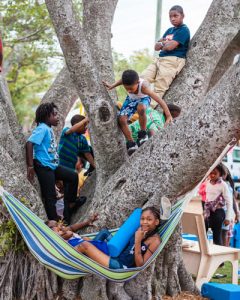
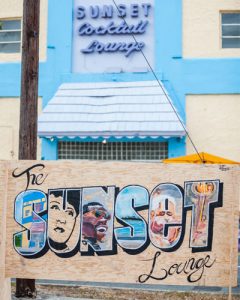
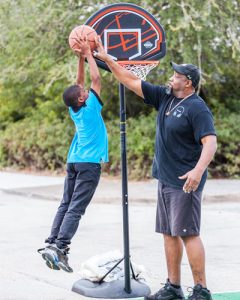
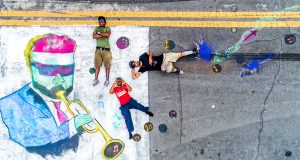

Didn’t sweat the stolen stuff
After Heart & Soul Fest was over, we left some of the Better Block interventions up to measure and evaluate how it would be used by the community on regular days. Sadly, within 48 hours, almost all of the furniture was stolen in one fell swoop. Rather than viewing it as a sign of failure, we believe that this incident just reinforces what community members have been telling us all along: the key to the success of the Sunset and the adjacent open space lies in the maintenance and activation. Going forward, the activation of this open space, as well as its edges and connections, must be a priority.
Plan for incremental improvements
The temporary improvements to the open space demonstrated tangible progress. This experiment increased community trust in the Historic Northwest Rising project and process. It also provided the CRA with proof that certain activations in the open space across from the Sunset will likely succeed. Rather than sitting on their hands until the construction plans for the open space are ready, the CRA is prepared to make incremental improvements to the park in the meantime and keep the momentum going!
8 80 Cities is currently working on a final report, which will contain the final results of the community engagement, evaluation of the temporary interventions, and final recommendations for the Sunset. Stay tuned!



